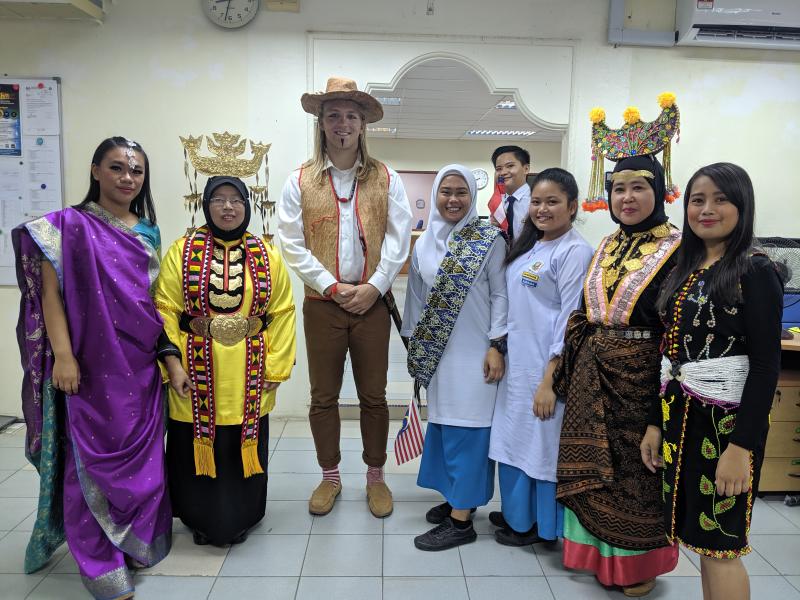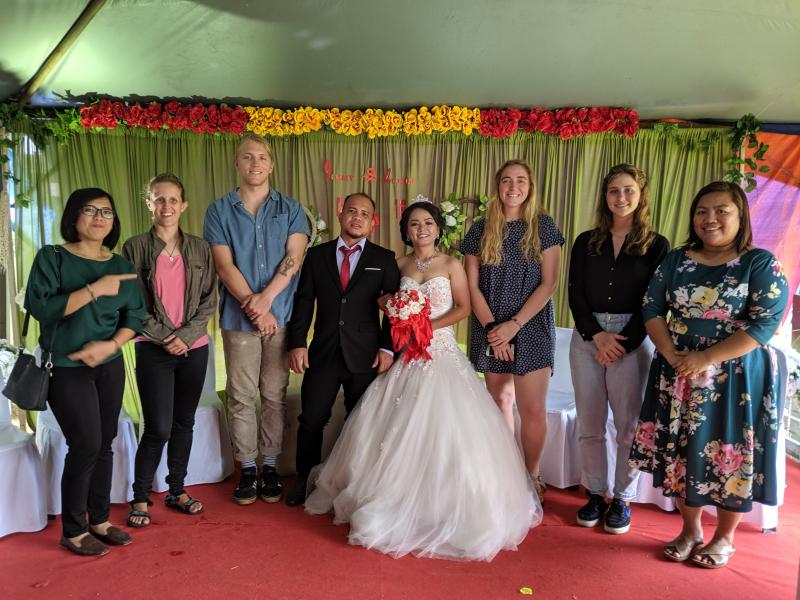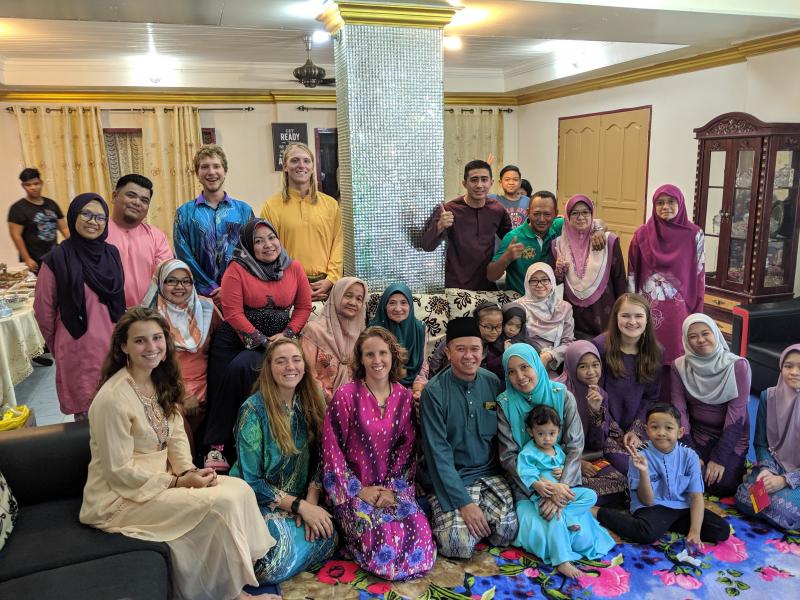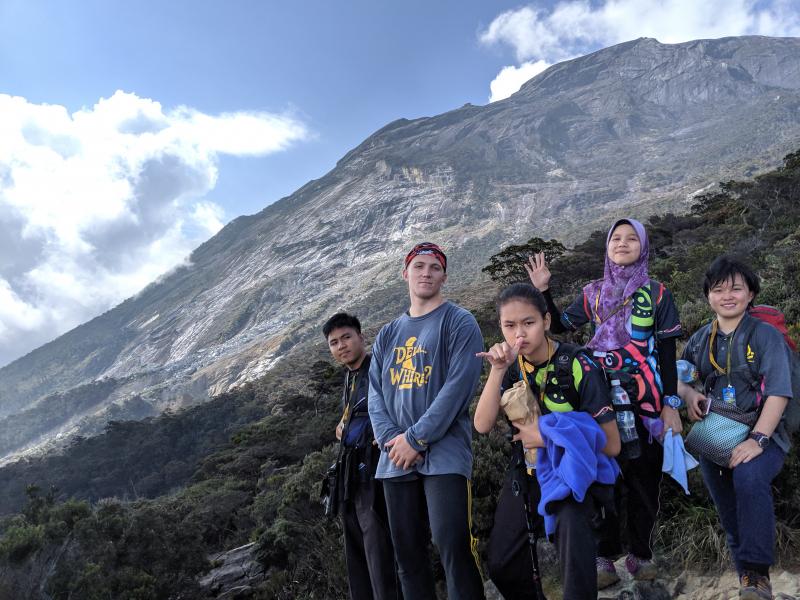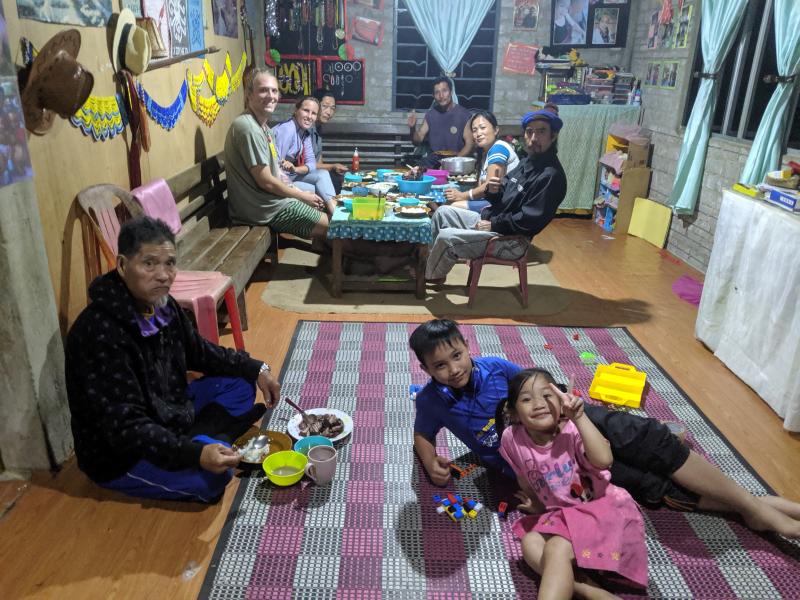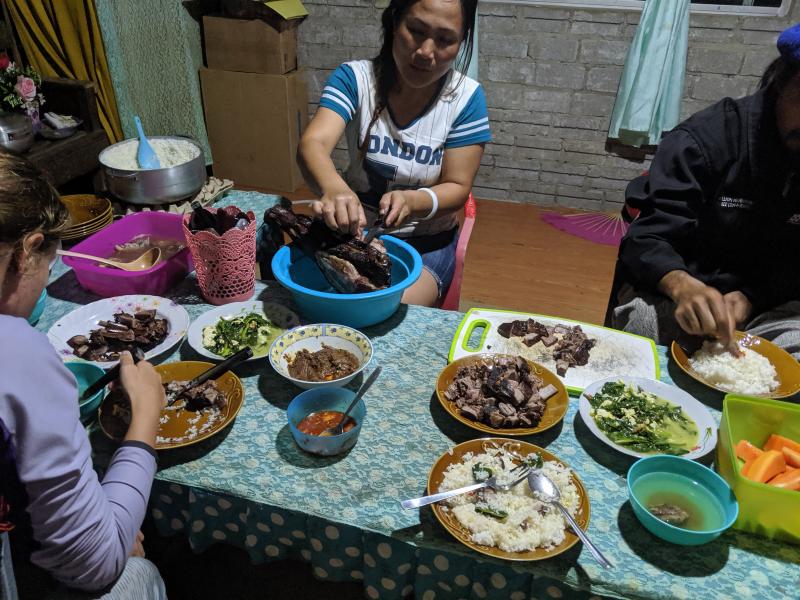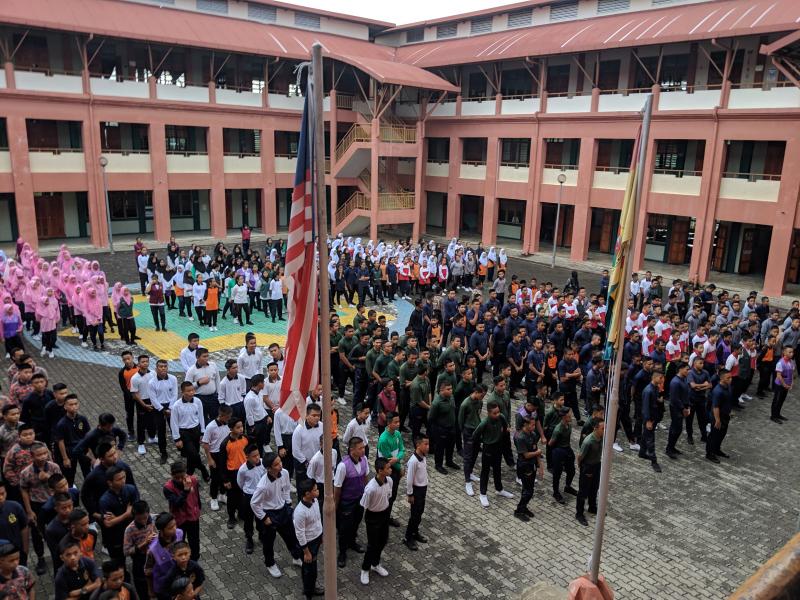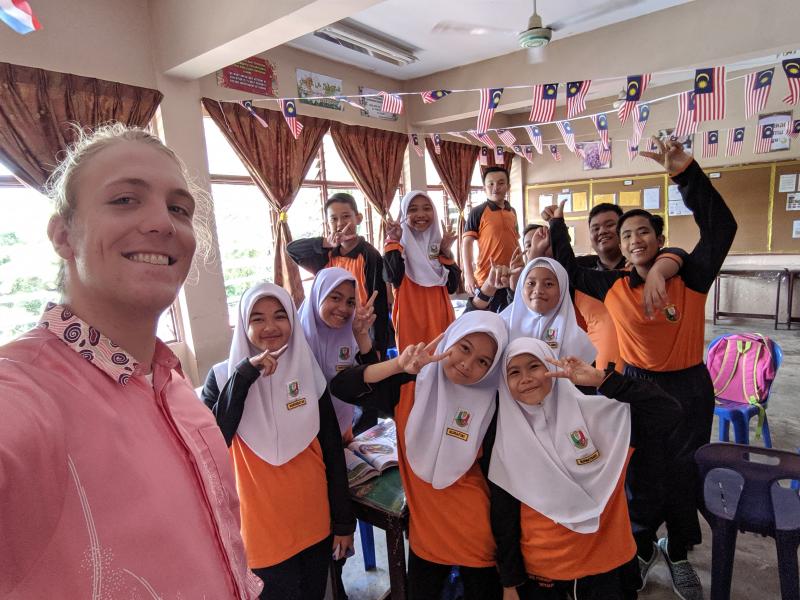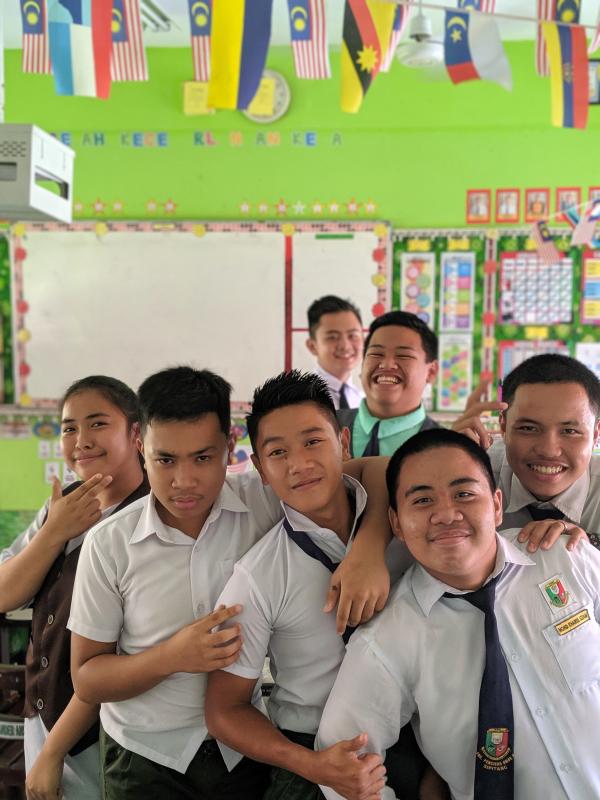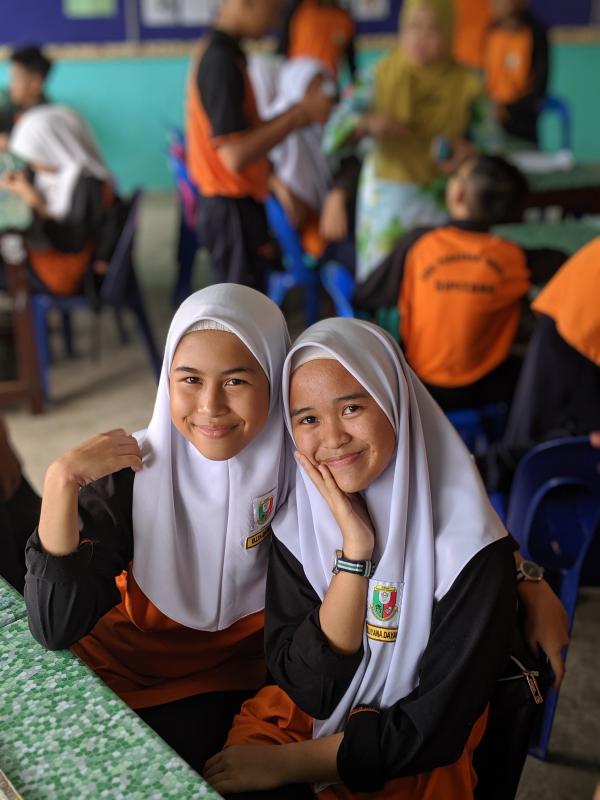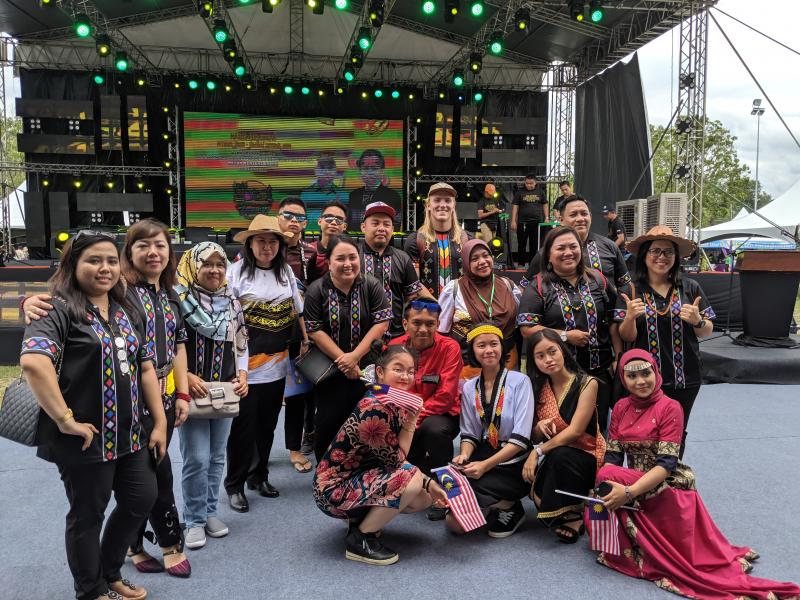Griffin Kammerer: exploring the world, connecting with its people
In his wallet, Griffin Kammerer keeps a folded square of paper autographed in swirls of blue and black ink by his Malaysian students.
“To me,” he said, carefully unfolding the note and pointing to names written in several languages, “it epitomizes the multiculturalism of Malaysia.”
Kammerer, a Cape High and Swarthmore College grad, returned to Rehoboth in November after teaching English in Sabah, Malaysia for 10 months through a Fulbright grant. Kammerer said he chose Malaysia because it was as different and as far as he could go.
The school was in Sipitang, a town that reminded Kammerer of the Cape Region’s size and sense of community. About 500 students in grades seven through 11 attend the school, where Kammerer worked with a Malay-speaking co-teacher to plan and conduct lessons.
“I started out as the white guy teaching, and evolved into - ‘that’s my son’s teacher!’” he said. “It was like having 500 little siblings to hang out with. I wanted to make school fun and be the bright spot in their day.”
Kammerer said he knew no Malay at first, but locals quickly took him under their wings.
“I went to weddings; I was a guest for dinners, holidays, birthday parties,” he said. “My job in a sense was to live there and be as much a part of the community as possible, to be a mentor and role model who knows about a different part of the world. I got used to living there, and by the end, I wasn’t a stranger.”
Tall with long blond hair, piercings and tattoos, Kammerer said he stood out at the school, attended primarily by indigenous Borneo children, as well as Chinese and Filipino immigrants.
“They were able to talk to a native English-speaker every day, so there are probably many things I taught them without realizing it,” he said. “Just with them listening to me talking, they had more exposure to the language.”
Most students were Muslim, Kammerer said, and it was tough when they asked what Americans think about them.
“How do I answer that? That’s speaking for all of America; well, I can’t,” he said. “It was very humbling, because it really made me think about what I know versus what I think I know. I didn’t want to force my opinions.”
Students were very inquisitive about life and culture in the United States, he said.
“It took a while to get used to being asked about alcohol, pork, tattoos and things that are forbidden to them,” he said. “My tattoos became a cool thing to talk about.”
Kammerer said because the area is so multicultural, residents celebrate every Muslim, Buddhist and Hindu holiday, and it was important to him as a teacher to respect individual customs and traditions with each family.
“It was cool to be around so many different things and see how old traditions haven’t been lost, even though the area has modernized,” he said. “They’re adapting to the modern world but didn’t lose touch with tradition.”
He said he also just spent time with students’ families.
“Everyone wanted to feed me - I had to learn to pace myself,” he laughed. “Malaysians are the nicest people in the world. I am so grateful for how welcoming they all were. It was awesome to see so much kindness.”
On days off, Kammerer visited nearby countries; Tokyo and Taipei became favorite places. He scuba-dived off Sipadan Island, rode a motorbike in Laos and went to a karaoke birthday party in Manila.
While Kammerer isn’t sure about his future plans, he hasn’t ruled out teaching as a profession.
“I like mentoring, guiding and helping people, and teaching is a direct route to that,” he said. “I want to keep going places, meeting people and seeing all the cool stuff there is in this world.”
Kammerer said there was one unique side effect of his trip.
“Now, I get to see America as if I’m not American,” he said. “It’s cool to be here and see my home as if it weren’t my home. I think about how I would explain things to my students and other teachers.”
Leaving Malaysia wasn’t easy.
“I said goodbye to each class and cried at each one,” he said. “I have a ton of friends there now. The impact they had on me was quite special. I learned something from everyone I met. I know I gave everyone I met something; I just may never know what it is.”
